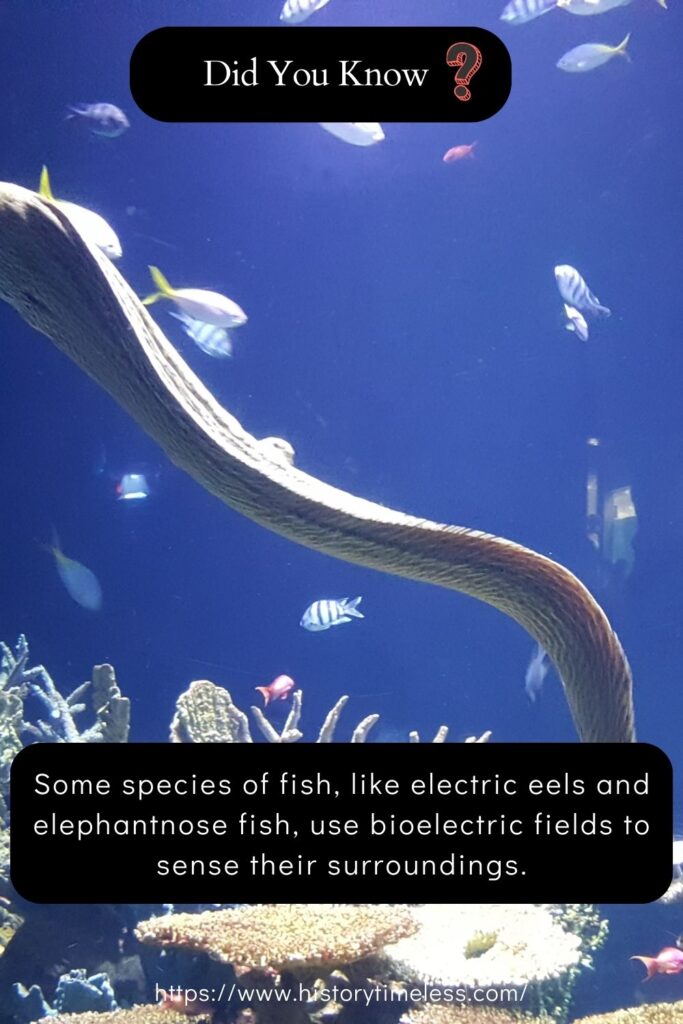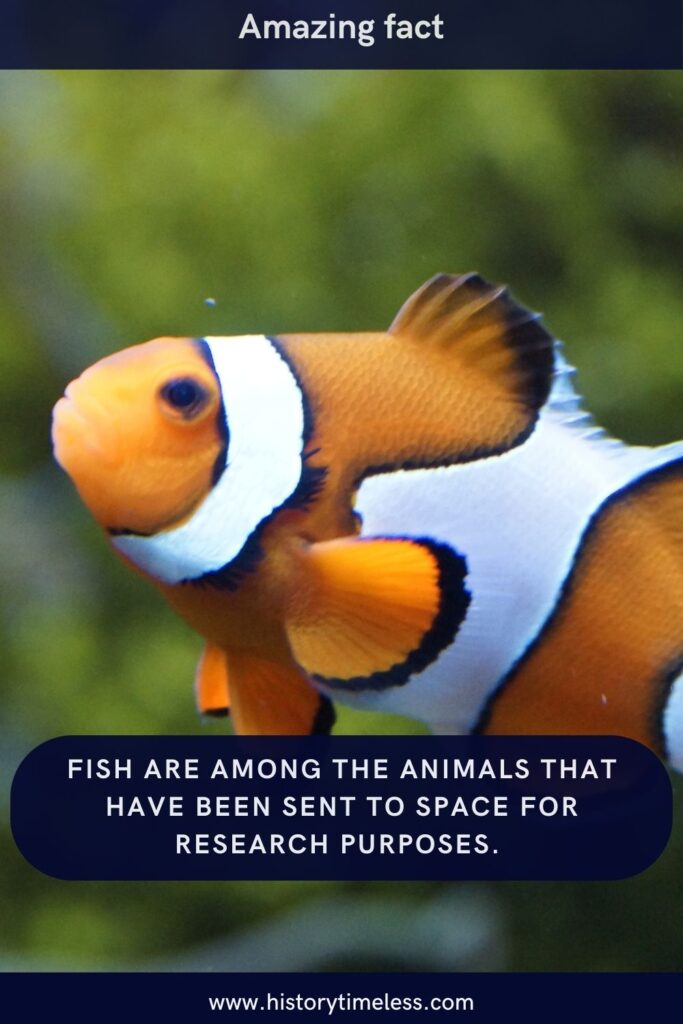Fish are among the most fascinating and diverse creatures on Earth. Found in nearly every aquatic environment, from shallow streams to the deepest parts of the ocean, these scaly swimmers come in all shapes, sizes, and colors.
Whether you’re a hobbyist, a marine enthusiast, or just curious, there’s something truly mesmerizing about fish.
In this post, we’ll dive into 25 captivating facts about fish that go beyond the basics — facts that might just surprise you and deepen your appreciation for the underwater world.
1. Some Fish Can Actually Change Their Gender
Many fish species, like clownfish and wrasses, can change their sex during their lifetime — a phenomenon called sequential hermaphroditism.
This ability helps them adapt to social or environmental changes. For instance, if the dominant female clownfish in a group dies, a male will change into a female to take her place.
It’s an extraordinary example of nature’s flexibility and is crucial for maintaining population dynamics in the wild. These natural role-switchers make fish one of the most adaptive creatures in the animal kingdom.
2. Fish Use Electrical Fields to Navigate and Hunt
Some species of fish, like electric eels and elephantnose fish, use bioelectric fields to sense their surroundings. This ability, called electroreception, allows them to detect prey, communicate, or navigate murky waters where vision is limited.

Electric fish can either generate electric pulses to “see” their environment or passively sense the electric signals of other organisms.
It’s like having a sixth sense built for underwater survival — one that even scientists are studying to develop new sonar and navigation technologies.
3. Fish Have an Invisible Line Called the Lateral Line
Fish possess a special sensory system known as the lateral line, which runs along both sides of their body. This line helps them detect vibrations and movements in the water.
It’s how fish can school so precisely, avoid predators, or locate prey even in the dark. Think of it like underwater radar.
This built-in guidance system gives fish incredible spatial awareness and is one reason they’re such skilled swimmers. It’s a feature unique to aquatic vertebrates and a true marvel of evolution.
4. Some Fish Can Survive Out of Water for Days
While most fish need water to breathe, some species have evolved to survive on land — at least temporarily. The African lungfish, for instance, can breathe air and live out of water for months by burrowing into mud during dry seasons.
Mudskippers, found in mangroves and mudflats, can walk on land and breathe through their skin and mouth linings.
These amphibious adaptations show just how versatile and resilient fish can be when it comes to survival in harsh environments.
5. Fish Communicate Using Sounds and Vibrations
Though we often think of the underwater world as silent, many fish actually make sounds to communicate. They might grunt, pop, or hum using their swim bladders or by grinding bones together.
These sounds are used for courtship, signaling distress, or establishing territory. Some species, like toadfish, are surprisingly noisy during mating season.
Since sound travels faster and farther in water, acoustic communication is an essential tool in a fish’s behavioral toolkit — even though it’s still a mystery in many species.
6. Fish Can See Ultraviolet and Polarized Light
Fish vision goes beyond what humans can perceive. Many species can see ultraviolet (UV) light, which helps them detect prey, navigate, and even recognize mates.
Some reef fish use UV markings that are invisible to predators but clear to members of their own species. Others, like anchovies and salmon, can detect polarized light, improving their ability to hunt or orient themselves during long migrations.
These visual superpowers are adaptations to the complex and ever-changing underwater world where clarity is often limited.
7. Fish Sleep, But Not the Way You Think
Fish do sleep — but not in the way mammals do. Most don’t have eyelids to close, and many stay semi-alert to avoid predators. Some fish rest motionless, reduce their metabolism, and remain in protected areas.
Parrotfish even create a mucus cocoon to hide their scent while sleeping! Fish sleep patterns vary widely across species, and some deep-sea or migrating fish may go without sleep for long periods.
It’s a fascinating reminder that rest is important in all parts of the animal kingdom — even without a comfy bed.
8. Some Fish Are Capable of Tool Use
Tool use isn’t just for primates and birds — some fish have also been observed using tools! For example, wrasses have been seen smashing clams against rocks to break them open.
Archerfish use precise water jets to shoot insects off leaves. These behaviors show problem-solving and learning abilities that were once thought to be exclusive to higher animals.
Such intelligent acts suggest that fish are far more complex and capable than their cold-blooded label might imply.
9. Fish Scales Tell Stories Like Tree Rings
Just like tree rings can reveal a tree’s age and history, fish scales can show details about a fish’s life. Scientists use a technique called scale aging to determine how old a fish is and to study its growth patterns.
The scales grow in rings — called circuli — which vary with seasons and food availability. Wider spaces between rings suggest faster growth, often during warmer months.
This non-lethal method helps researchers understand fish populations, monitor ecosystems, and track environmental changes over time.
10. Fish Play an Important Role in Human Culture
Fish aren’t just food or pets — they hold deep cultural, religious, and economic significance around the world. In Japanese culture, koi fish symbolize perseverance and good fortune.
In Christianity, the fish symbol represents faith and abundance. Many coastal communities rely on fishing for livelihood and cultural identity.
Even in art and mythology, fish appear as symbols of wisdom, mystery, or transformation. Their presence in stories and rituals highlights how deeply human history is tied to the underwater world.
11. Fish Can Recognize Individual Faces
It might sound surprising, but some fish species — like archerfish — have shown the ability to recognize individual human faces. In lab tests, archerfish were able to pick out familiar faces from unfamiliar ones with amazing accuracy.
This is especially impressive considering they don’t even have a neocortex, the part of the brain usually associated with facial recognition in humans.
This suggests that fish have more complex visual processing and memory abilities than once believed, challenging long-held assumptions about “lower” animals.
12. Fish Have Been to Space (Sort Of)
Fish are among the animals that have been sent to space for research purposes. NASA has studied fish in microgravity to understand how the lack of gravity affects balance and movement, especially since fish rely heavily on their sense of orientation in water.

Zebrafish are a common choice for space missions because they develop quickly and have similar genetic structures to humans.
These space-swimming experiments help scientists study the vestibular system, bone loss, and even stress response in zero gravity.
13. Some Fish Glow in the Dark Naturally
Bioluminescence — the ability to produce light — is found in many deep-sea fish species. Anglerfish, flashlight fish, and lanternfish use this natural glow to lure prey, find mates, or confuse predators.
This light is produced by chemical reactions or via symbiotic bacteria living in the fish’s body. In the pitch-black ocean depths, glowing features are a major advantage for survival. Some fish even use flashes to communicate or mimic the flicker of plankton to attract curious prey.
14. Fish Can Drown If Oxygen Levels Are Low
While fish “breathe” underwater using gills, they can actually drown if the oxygen levels in the water drop too low. This can happen in polluted or overpopulated waters, during algae blooms, or when water temperatures rise.
Gills extract dissolved oxygen from water, and without enough of it, fish suffocate. It’s a stark reminder that healthy aquatic ecosystems are vital for fish survival — and that “breathing underwater” isn’t as invincible as it sounds.
15. Fish Can Make Nests and Care for Eggs
Many fish species are surprisingly nurturing parents. Male sticklebacks, for example, build bubble nests for their eggs and fiercely guard them from predators.
Cichlids dig pits in the sand, while jawfish literally carry eggs in their mouths for protection. Seahorses go a step further — it’s the male that gets pregnant and carries the babies!
These parenting behaviors challenge the stereotype of fish as indifferent breeders and highlight the diversity of reproductive strategies in aquatic life.
16. The Ocean’s Fastest Fish Can Reach Jet-Like Speeds
The sailfish holds the title for the fastest fish in the ocean, reaching speeds of up to 68 mph (110 km/h). With its streamlined body, powerful tail, and iconic sail-like dorsal fin, it’s built for speed.
These bursts help it chase down fast-moving prey like sardines and mackerel. Watching a sailfish in action is like seeing a living torpedo in the sea — a true marvel of hydrodynamic engineering by nature.
17. Some Fish Use Camouflage Like Underwater Ninjas
Many fish species have evolved camouflage abilities to blend seamlessly with their surroundings. Flatfish like flounders can change color to match the ocean floor.
Stonefish resemble rocks or coral, making them nearly invisible — and dangerous due to their venomous spines.
These camouflage tricks help fish hide from predators or sneak up on prey. It’s nature’s version of stealth mode, honed over millions of years in the world’s most competitive environments.
18. Fish Don’t Have Eyelids But Still Protect Their Eyes
Fish lack eyelids, which is why their eyes always look wide open. But that doesn’t mean their eyes are vulnerable. Many fish have a protective layer called a nictitating membrane or rely on water itself to keep their eyes clean and moist.
In species that live in rough environments like coral reefs or the ocean floor, eye placement and tough outer coatings help prevent injury. Some sharks even roll their eyes back for protection when attacking prey.
19. Not All Fish Lay Eggs — Some Give Live Birth
While egg-laying (oviparous reproduction) is common in fish, some species give live birth (viviparous reproduction), just like mammals.
Guppies, mollies, and certain sharks like the hammerhead and lemon shark give birth to fully formed baby fish. This method often results in fewer offspring, but with a better survival rate.
It’s an evolutionary trade-off that’s worked for millions of years — and one that adds more variety to fish reproduction strategies than many people realize.
20. Fish Play — Just Like Cats and Dogs Do
Believe it or not, some fish have been observed engaging in play behavior. Researchers have noted cichlids and bettas interacting with objects like pebbles or bubbles for no apparent reason other than enjoyment.
Even rays and some larger fish species in aquariums seem to play in currents or with enrichment tools provided by zookeepers.
Play is often associated with intelligence, so these behaviors hint at a more complex emotional and cognitive world for fish than previously thought.
21. Some Fish Can Swim Backwards With Ease
While most fish are built for forward motion, a few species have mastered the art of swimming in reverse. The knifefish, for example, uses its undulating fin to glide backward just as smoothly as it moves forward.
This unique movement helps it navigate tight spaces and even hunt prey in reverse. Electric eels and some catfish can also perform backward swimming maneuvers when escaping predators or exploring crevices. It’s a rare and fascinating ability that gives these fish added agility in complex environments.
22. Fish Taste With More Than Just Their Mouths
Unlike humans, fish can taste with their entire bodies — especially along their lips, fins, and even their skin. Catfish, in particular, are known for having thousands of taste buds spread across their bodies, including their whisker-like barbels.
This widespread tasting ability helps them locate food in murky water or at night when vision is limited. It’s like having a built-in food radar, turning their whole body into a sensory powerhouse to sniff out snacks in the mud and murk.
23. Parrotfish Poop Helps Make Tropical Beaches
Believe it or not, some of the soft white sand on tropical beaches is actually parrotfish poop. These colorful reef fish chew on coral with their beak-like mouths, digest the edible algae, and excrete the indigestible calcium carbonate as fine sand.
A single parrotfish can produce hundreds of pounds of sand per year! While it might sound unappetizing, this natural process plays a major role in maintaining healthy beaches and coral ecosystems — truly a weird but wonderful example of nature’s recycling.
24. Some Fish Use Venom for Defense
Not all fish rely on speed or camouflage to survive — some come equipped with venomous spines. The lionfish, stonefish, and weever fish are notorious examples.
These fish have venomous barbs or fins that can deliver painful — and sometimes dangerous — stings to predators or unsuspecting swimmers.
Their venom serves as a strong deterrent against threats and makes them one of the few fish with a built-in chemical defense system. It’s another reason to be cautious when exploring unfamiliar marine environments.
25. Fish Can Migrate Thousands of Miles to Spawn
Some fish travel incredible distances just to reproduce. The most famous example is the salmon, which swims upstream from the ocean into freshwater rivers — sometimes leaping over waterfalls — to return to its birthplace and spawn.
Similarly, freshwater eels migrate thousands of miles to the Sargasso Sea to reproduce and then die. These migrations are guided by an incredible internal compass and biological drive, showcasing the remarkable endurance and instinctual navigation of fish in their life cycles.
Check out more awesome info:
26 Weird Facts About Fruit You’ll Want to Tell Everyone!
25 Facts About Flower That’ll Make You See Them Differently!
20+ Insane Facts About Animals That Defy Belief!
15+ Interesting World Facts: Say ‘Wow’ to These Discoveries!




